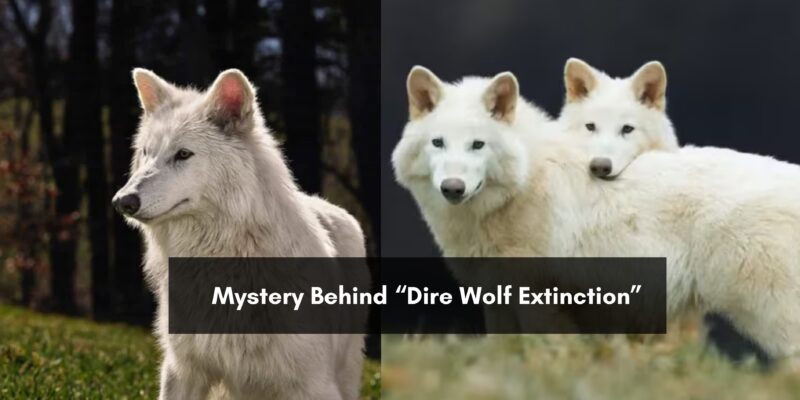When people think of wolves, they imagine the contemporary gray wolf howling at a full moon. Yet before today’s wolves prowled the forests and tundra, a far bigger and more ferocious predator stalked North America’s landscapes—the dire wolf. Scientifically termed Aenocyon dirus, this legendary species walked the planet during the Pleistocene, approximately 125,000 to 10,000 years ago. So why did the dire wolf go extinct, and what can we gain from this?
What Were Dire Wolves?
Dire wolves were top predators and looked much like gray wolves of today but were bigger and stronger. They weighed as much as 150 pounds and boasted jaws designed to crush bone and kill massive megafauna such as bison, horses, and even young mammoths. Dire wolves were a force to be reckoned with in North America for millennia.
READ MORE: The Return of the Dire Wolf
The Fall of a Giant: Dire Wolf Extinction
Although they dominated their ecosystem, dire wolves became extinct approximately 10,000 years ago, coinciding with the last Ice Age’s end. These were years of great environmental change, referred to as the climate change impact of the Pleistocene-Holocene transition. The changes eradicated most large animals, leaving very little for the dire wolf to prey on.
Climate alone, however, does not tell the whole story.
Recent research on genetics indicates that dire wolves were not as closely related to contemporary wolves as previously assumed. Unlike coyotes and gray wolves, dire wolves did not intermix with other species of canids. This genetic isolation may have restricted their adaptability as the environment and food changed.
READ MORE BLOG: Do ChatGPT’s Ghibli-style Images Online?
Human Influence and Competition
There is also increasing evidence that early human groups might have played a role in the extinction of dire wolves. As humans migrated through North America, they hunted a number of the same large mammals that dire wolves preyed on for food. Human competition, as well as the introduction of competitors such as gray wolves and big cats, most likely strengthened the competition for survival.
Why It Matters Today?
The tale of the dire wolf’s extinction is more than a prehistoric enigma. It is a reminder of how environmental change, genetic diversity, and human intervention can affect even the most dominant species. With a current biodiversity crisis in our modern world, the history of the dire wolf is a cautionary tale we should not forget.
READ THIS : Incredible Facts Related To Our Earth You Have To Know!
FAQs About Dire Wolf Extinction
1. What led to the extinction of the dire wolf?
Dire wolf extinction is attributed to a range of factors including climate change at the close of the Ice Age, loss of large prey species (megafauna), and competition with other predators such as gray wolves and early humans.
2. When did dire wolves become extinct?
Dire wolves became extinct around 10,000 years ago during the close of the Pleistocene epoch.
3. Were dire wolves larger than gray wolves?
Yes, dire wolves tended to be bigger and more massive than current-day gray wolves. They had a more robust construction, particularly of the skull and teeth, adapted for crushing bones.
4. Did dire wolves and gray wolves coexist?
Yes, there was a time of overlap when dire wolves and gray wolves both roamed North America. But they probably filled different ecological niches and hunted the same food.
5. Were dire wolves able to breed with modern wolves?
No, genetic studies indicate dire wolves were not closely related to present-day wolves and were genetically distinct. They probably could not breed with gray wolves or coyotes.
6. How do scientists know about dire wolves?
Fossil evidence, especially from the La Brea Tar Pits of California, has given scientists thousands of dire wolf specimens. Their size, diet, and potential reasons for becoming extinct are reconstructed with the help of these fossils.
7. Do dire wolves have a connection to Game of Thrones’ direwolves?
The Game of Thrones dire wolves were based on the actual dire wolf, but the TV versions are fictional, giant-sized beasts. The actual dire wolf was a large predator, but certainly not the size of a pony as portrayed on TV.
Disclaimer:
The information provided in this blog post is intended for educational and informational purposes only. While every effort has been made to ensure the accuracy of the content regarding dire wolves and their extinction, new research and scientific discoveries may update our understanding of these prehistoric animals. This article should not be considered a definitive scientific source. For in-depth or academic research, please refer to peer-reviewed journals or consult with a professional in paleontology or evolutionary biology.












